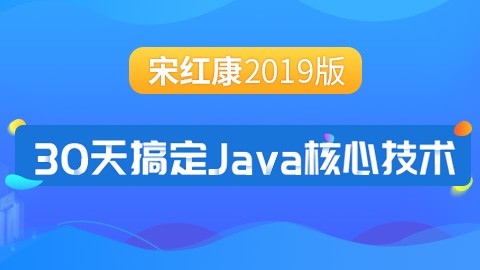5.1、bean的作用域
5.1.1、单例(默认且常用)
5.1.1.1、配置bean

注意:当bean不配置scope属性时,默认是singleton(单例)
<?xml version="1.0" encoding="UTF-8"?>
<beans xmlns="http://www.springframework.org/schema/beans"
xmlns:xsi="http://www.w3.org/2001/XMLSchema-instance"
xsi:schemaLocation="http://www.springframework.org/schema/beans http://www.springframework.org/schema/beans/spring-beans.xsd">
<bean id="student" class="org.rain.spring.pojo.Student"></bean>
</beans>
5.1.1.2、测试

由控制台日志可知,此时ioc获取到的两个bean本质上是同一个对象
@Test
public void testScope() {
ApplicationContext applicationContext = new ClassPathXmlApplicationContext("spring-scope.xml");
Student student1 = applicationContext.getBean(Student.class);
Student student2 = applicationContext.getBean(Student.class);
System.out.println(student1 == student2);
}
5.1.2、多例
5.1.2.1、配置bean

<?xml version="1.0" encoding="UTF-8"?>
<beans xmlns="http://www.springframework.org/schema/beans"
xmlns:xsi="http://www.w3.org/2001/XMLSchema-instance"
xsi:schemaLocation="http://www.springframework.org/schema/beans http://www.springframework.org/schema/beans/spring-beans.xsd">
<!--
scope属性:设置bean的作用域
当属性值为singleton时,在IOC容器中这个bean的对象始终为单实例;且创建对象的时机是IOC容器初始化时
当属性值为prototype时,在IOC容器中这个bean的对象有多个实例;且创建对象的时机是获取bean时
-->
<bean id="student" class="org.rain.spring.pojo.Student" scope="prototype"></bean>
</beans>
5.1.2.2、测试

由控制台日志可知,此时ioc获取到的两个bean本质上是不同的对象
5.1.3、其他作用域
如果是在WebApplicationContext环境下还会有另外两个作用域(但不常用):
-
request:在一个请求范围内有效
-
session:在一个会话范围内有效
5.2、bean的生命周期
5.2.1、创建User类

package org.rain.spring.pojo;
/**
* @author liaojy
* @date 2023/8/3 - 23:59
*/
public class User {
private Integer id;
private String username;
private String password;
private Integer age;
public User() {
System.out.println("生命周期1:创建对象");
}
public User(Integer id, String username, String password, Integer age) {
this.id = id;
this.username = username;
this.password = password;
this.age = age;
}
public Integer getId() {
return id;
}
public void setId(Integer id) {
System.out.println("生命周期2:依赖注入");
this.id = id;
}
public String getUsername() {
return username;
}
public void setUsername(String username) {
this.username = username;
}
public String getPassword() {
return password;
}
public void setPassword(String password) {
this.password = password;
}
public Integer getAge() {
return age;
}
public void setAge(Integer age) {
this.age = age;
}
public void initMethod(){
System.out.println("生命周期3:初始化");
}
public void destroyMethod(){
System.out.println("生命周期4:销毁");
}
@Override
public String toString() {
return "User{" +
"id=" + id +
", username='" + username + ''' +
", password='" + password + ''' +
", age=" + age +
'}';
}
}
5.2.2、配置bean

<?xml version="1.0" encoding="UTF-8"?>
<beans xmlns="http://www.springframework.org/schema/beans"
xmlns:xsi="http://www.w3.org/2001/XMLSchema-instance"
xsi:schemaLocation="http://www.springframework.org/schema/beans http://www.springframework.org/schema/beans/spring-beans.xsd">
<!--
init-method属性:指定初始化方法
destroy-method属性:指定销毁方法
-->
<bean id="user" class="org.rain.spring.pojo.User" init-method="initMethod" destroy-method="destroyMethod">
<property name="id" value="1"></property>
<property name="username" value="张三"></property>
<property name="password" value="123"></property>
<property name="age" value="11"></property>
</bean>
</beans>
5.2.3、测试

@Test
public void testLifecycle(){
//ConfigurableApplicationContext是ApplicationContext子接口,扩展了刷新和关闭容器的方法
ConfigurableApplicationContext ioc = new ClassPathXmlApplicationContext("spring-lifecycle.xml");
User user = ioc.getBean(User.class);
System.out.println(user);
ioc.close();
}
5.3、作用域对生命周期的影响
5.3.1、作用域为单例时
5.3.1.1、配置bean

<bean id="user" class="org.rain.spring.pojo.User" init-method="initMethod" destroy-method="destroyMethod">
<property name="id" value="1"></property>
<property name="username" value="张三"></property>
<property name="password" value="123"></property>
<property name="age" value="11"></property>
</bean>
5.3.1.2、测试

由控制台日志可知,当bean的作用域为单例时,生命周期的前三个步骤会在获取IOC容器时执行
@Test
public void testLifecycle(){
//ConfigurableApplicationContext是ApplicationContext子接口,扩展了刷新和关闭容器的方法
ConfigurableApplicationContext ioc = new ClassPathXmlApplicationContext("spring-lifecycle.xml");
}
5.3.2、作用域为多例时
5.3.2.1、配置bean

<bean id="user" class="org.rain.spring.pojo.User" init-method="initMethod" destroy-method="destroyMethod" scope="prototype">
<property name="id" value="1"></property>
<property name="username" value="张三"></property>
<property name="password" value="123"></property>
<property name="age" value="11"></property>
</bean>
5.3.2.2、测试

由控制台日志可知,当bean的作用域为多例时,生命周期的前三个步骤会在获取bean时执行
@Test
public void testLifecycle(){
//ConfigurableApplicationContext是ApplicationContext子接口,扩展了刷新和关闭容器的方法
ConfigurableApplicationContext ioc = new ClassPathXmlApplicationContext("spring-lifecycle.xml");
User user = ioc.getBean(User.class);
}
5.4、bean的后置处理器
5.4.1、创建bean的后置处理器

注意:自定义的bean后置处理器,需要实现BeanPostProcessor接口
package org.rain.spring.process;
import org.springframework.beans.BeansException;
import org.springframework.beans.factory.config.BeanPostProcessor;
/**
* @author liaojy
* @date 2023/8/4 - 23:52
*/
public class MyBeanProcessor implements BeanPostProcessor {
public Object postProcessBeforeInitialization(Object bean, String beanName) throws BeansException {
System.out.println("MyBeanProcessor-->后置处理器postProcessBeforeInitialization");
return bean;
}
public Object postProcessAfterInitialization(Object bean, String beanName) throws BeansException {
System.out.println("MyBeanProcessor-->后置处理器postProcessAfterInitialization");
return bean;
}
}
5.4.2、配置bean的后置处理器

注意:bean后置处理器不是单独针对某一个bean生效,而是针对IOC容器中所有bean都会执行
<!-- bean的后置处理器要放入IOC容器才能生效 -->
<bean id="myBeanPostProcessor" class="org.rain.spring.process.MyBeanProcessor"></bean>
5.4.3、测试

由控制台日志可知,bean的后置处理器会在生命周期的初始化前后添加额外的操作
@Test
public void testLifecycle(){
//ConfigurableApplicationContext是ApplicationContext子接口,扩展了刷新和关闭容器的方法
ConfigurableApplicationContext ioc = new ClassPathXmlApplicationContext("spring-lifecycle.xml");
User user = ioc.getBean(User.class);
System.out.println(user);
ioc.close();
}
5.5、具体的生命周期过程
-
bean对象创建(调用无参构造器)
-
给bean对象设置属性
-
bean对象初始化之前操作(由bean的后置处理器负责)
-
bean对象初始化(需在配置bean时指定初始化方法)
-
bean对象初始化之后操作(由bean的后置处理器负责)
-
bean对象就绪可以使用
-
bean对象销毁(需在配置bean时指定销毁方法)
-
IOC容器关闭
内容来源于网络如有侵权请私信删除
文章来源: 博客园
- 还没有人评论,欢迎说说您的想法!





 客服
客服


